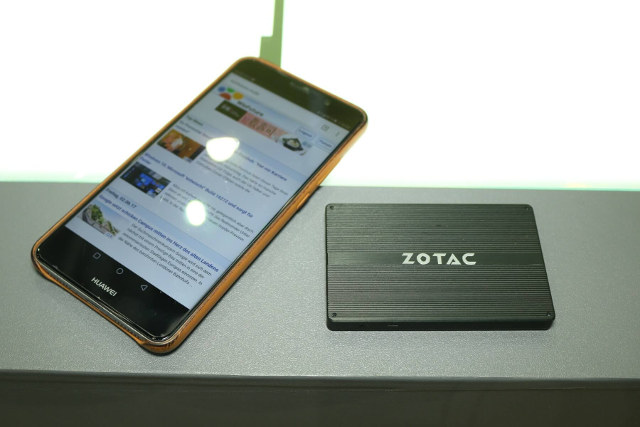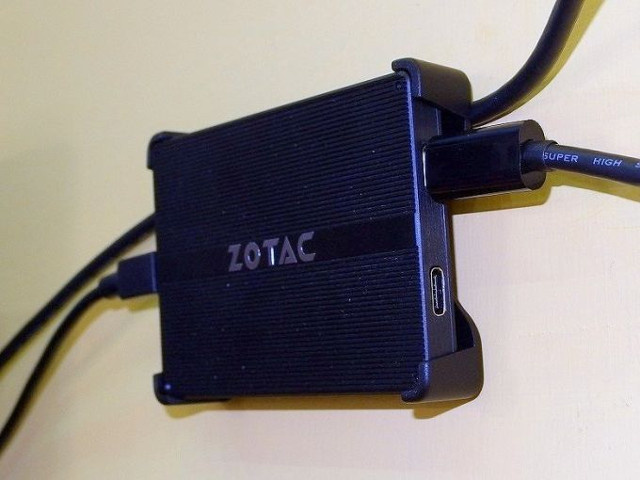We’ve covered a large number of tiny mini PCs and TV sticks powered by Intel processors, but usually they are thicker than your smartphone because of USB, HDMI, and Ethernet ports if the latter is included. Zotac decided to leverage USB type C data and display capabilities to do away with USB & HDMI ports, and used a micro USB port for power in their latest Zotac PI225 mini PC resulting in an ultra thin (8mm) mini PC that is smaller than a 2.5″ SSD.
Zotac PI225 mini PC specifications:
- SoC – Intel Celeron N3350 dual core “Apollo Lake” processor @ 1.1 / 2.4 GHz with 12 EU Intel HD Graphics 500 (6W TDP)
- System Memory – 4 GB LPDDR3
- Storage – 32 GB eMMC flash, micro SDXC slot
- USB – 2x USB 3.0 type C connectors with data and DisplayPort support
- Connectivity – 802.11ac WiFi and Bluetooth 4.2
- Power – 1x micro USB port
- Dimensions – 90 x 60 x 8 mm

The mini PC should run Windows 10 64-bit. We do not have pricing nor availability information at this stage.
Via Liliputing, Tom’s Hardware, and WinFuture (in German)

Jean-Luc started CNX Software in 2010 as a part-time endeavor, before quitting his job as a software engineering manager, and starting to write daily news, and reviews full time later in 2011.
Support CNX Software! Donate via cryptocurrencies, become a Patron on Patreon, or purchase goods on Amazon or Aliexpress





